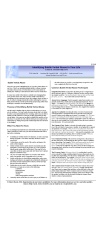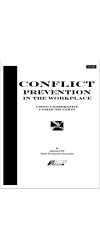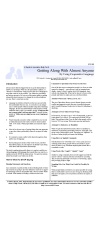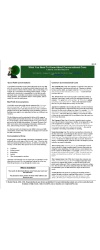Original price was: $24.95.$6.25Current price is: $6.25.
Teachers and school administrators work hard just to keep up with the challenges of teaching children and young adults, but part of the job is also to communicate with, and work with parents as partners.
Unfortunately, often because parents care so much about their children, they interact with school staff in angry, emotional and even aggressive ways. That costs teachers and principals even MORE time spent away from student oriented tasks, not to mention the stress of dealing with unreasonable demands, personal insults, and even harassment by parents and community members.
Teachers aren’t taught in teacher education how to deal with these situations. This book maps out in detail, how to turn around difficult emotional conversations with parents.
What Makes This Book Special
A lot of the available advice on how to interact with angry parents is vague, over-simplified and sometimes even wrong. We’ve taken the best techniques learned from 25 years of experience, research in psychology and psycholinguistics, and translated them into actual “what to say and what to do”.
Provides realistic “use today” strategies for how not to take personal attacks personally. There are some simple exercises in the book to help.
Written for teachers and school administrators to take into account the unique partnering relationship that exists between home and school. It’s NOT the same as it is in industry, or even in government.
Contains over 100 tactics and strategies to use, a number of which you won’t have been exposed to previously. Uses principles of verbal self defense, and the martial arts, and even some techniques used by hostage negotiators.
Description
What’s Inside?
Below is a chapter by chapter synopsis so you can determine for yourself whether this book is for you.
Chapter 1— Introduction: It Takes A Village
Chapter 1 begins with some quotes from teachers and school administrators who share some of their frustrations at the demands made upon them by parents. Since there’s two sides to every story, you’ll also see some of the common gripes parents have about interacting with school staff.
Later in the chapter the importance of parents and school staff working together is highlighted, around the central reality: It takes a village to teach a child, and you’ll learn why it’s not only good for the children when everyone works together, but that there’s a number of practical positive outcomes for school staff to be more effective with communicating with even the most difficult parents.
Chapter 2 — The Nature of Angry, Hostile and Abusive Behavior
You can’t improve your communication with difficult parents without understanding where angry and emotional behavior “comes from”, since the techniques in this book capitalize on the Psychology of angry and difficult behavior. In this chapter, you’ll find some definitions that make the distinction between angry behavior and manipulative, and abusive behavior since they need to be dealt with differently.
Chapter 3 — Why Do We Have So Much, Verbal Abuse From Adults And How Can We Use What We Know To Defuse Uncivil Behavior?
We look at why verbal abuse is so common in adults, consider the issue of adults acting like children, and explain the origins of destructive communication patterns. We also look at the idea of “automatic scripts”, since many of our techniques to stop destructive communication rely on disrupting the “tapes” that run off in people’s heads.
You’ll also learn about the psychological needs emotional parents and community members have, when they are angry, since these are crucial in improving home-school communication.
Chapter 4 — Overview of The Defusing Process
You’ll learn the importance of timing and that not only does a constructive conversation depend on WHAT you say, but WHEN you say it, when emotions run high. You’ll learn about the CARP system for communicating in emotional situations, plus the twelve essential principles you must use when dealing with emotionally upset or difficult parents.
Chapter 5 — The Art And Science of Self Control
How can you keep your cool, and “not take” insults, or negative parental comments personally? They ARE personal, so in this chapter you will learn some techniques to use to improve your own self-control in tough and emotional situations. We go beyond the “don’t take it personally” advice, and tell you HOW to not take it personally.
Chapter 6 — Starting Off Successfully
If you start off a conversation badly, particularly with someone who’s emotions are running high, it’s very hard to fix the conversation. In this chapter you’ll find eight tactics to use to get conversations off on the right foot, including the importance of building rapport with parents.
Chapter 7 — The Art of Cooperative Language—The Power Of Language
The power of language is really amazing. Very small changes in what you say, the words you choose, and how you say things can make a huge difference between creating difficult, emotional conversations with parents, and much easier, shorter, and more constructive ones. In this chapter you’ll learn how to make these small changes, and to avoid “throwing gasoline on the fire” in emotional situations.
Chapter 8 — Verbal Self-Defense Techniques — Control
Verbal self-defense techniques are designed to encourage parents to listen to you even if they are emotional or angry. Based on martial arts principles of Aikido and Jiujitsu, these verbal tactics that you can learn easily are proven to shorten difficult and crucial conversations and get others to listen. Thirteen tactics are included.
Chapter 9 — Acknowledgment Tactics
Acknowledgement tactics may be familiar to you because they include listening and empathy type statement. We cover these in this chapter, but in a way that’s different than you may have come across before. Learn to use these powerful techniques PROPERLY!
Chapter 10 — Countering Nonverbal Intimidation
What do you do when a parent of taxpayer gets “in your space? Find out how to handle this awkward situation with finesse, and without calling attention to the interpersonal space violation. Also, we talk about how to handle people who use their physical presence to put you off balance.
Chapter 11 — Referral Techniques
Learn to take advantage of the “status” of others in your organization to defuse difficult situations, and how to pass on a parent to someone else without “passing the buck”. An often under used tactic. Covers referral to the Principal, or to a colleague.
Chapter 12 — Time Out — Disengaging
You know all about time outs with children, but here we talk about modifying them to work with adults and parents. It’s called disengaging, and allowing parents time to reflect, and even apologize when their behavior has gone “over the line”.
Chapter 13 — Problem Solving And Negotiations Tactics
You want to create a climate where you and a parent can work together to problem solve, and that requires some negotiation skills, exchanging information, and defining each other’s position and what’s important. That’s what’s in this chapter.
Chapter 14 — Assertive Limit Setting
What do you do when interacting with a parent who is so angry, or abusive that there’s no hope of progress unless his or her behavior changes? In this section we talk about what to do when a parent strays over your “civil line”, or when the conversation is clearly going nowhere. You’ll notice that the approach here is a bit different than standard assertive advice. It’s an important chapter.
Chapter 15 — For Principals, Administrators And Managers
Principals, superintendents and managers and supervisors play crucial roles in supporting line staff — teachers, support staff in dealing effectively with parents. This chapter provides tactics to use to teach, tutor and lead school staff to interact more effectively with parents.
Chapter 16 — The Effect of the Medium—Email and Telephones
These days a lot of communication between home and school happens via email and phones, so we’ve included a chapter that explains when and how each medium should be used.
Chapter 17 — Audiences, Groups, Crowds and Mobs
Educational staff often participate in various group events, doing speeches and presentations, but they also meet with more than one other person at a time (e.g. two parents). When you have additional people present the dynamics change. In this chapter you’ll learn how to deal with incidental audiences and bystanders to conversations, and how speak to difficult groups who may resist the message or information you have to deliver. Powerful techniques, and essential, particularly for administrators who do group presentations.
Chapter 18 — Final Comments
Now that you’ve finished the book, what comes next? Here you’ll find tips and suggestions about transferring what you’ve learned to your work, so the tactics and skills become second nature — new and constructive habits.
Buying Options:
This book is available in three formats: In Print, in Kindle format readable on any device that supports the free Amazon Kindle reader software, and in instantly downloadable and printable PDF format.










Must read if you work in education.
I have been embroiled with a contentious parent, and a child who not only lied about interactions with two instructors, but went to the superintendent with their concerns. They didn’t bother contacting the teachers first to try to peacefully suss things out.As a result, their lives have been turned upside down by what has boiled down to a series of made up stories told to avoid going to school. Why this child chose to throw two teachers who support him to his core is beyond me, but it’s happened. The parent is violent, controlling, and domineering when in meetings and has a reputation for screaming at both office staff and teachers, and overreacting to very minor things.I did a bit of research on how to diffuse these types of situations, not take the bait, and not fall to bits, and to come out on the other side with grace and dignity for all parties. I came across this book via another website and was pleased to find it on Amazon. The kindle edition has numerous typos, but this ought not to get in the way of reading the very useful information.Suffice to say; the information in this book is solid. It works. As the book predicted, the parent arrived, used her size and weight to intimidate, used long, unbroken eye contact… I used every ounce of information gleaned from the book to hold my ground, state my truth, and maneuver out of the many traps she tried to set for all of the people on the team. If you work in education, this book should be read.
2 people found this helpful